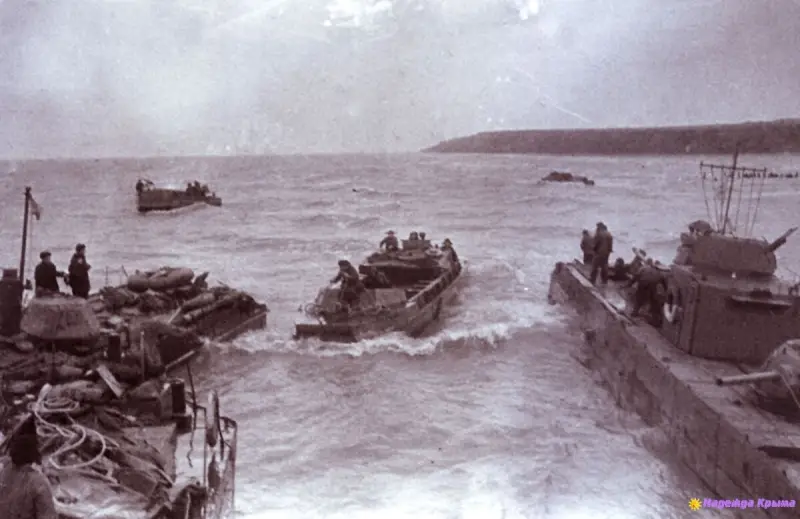Kerch-Eltigen landing operation: prologue to the liberation of Crimea

After the troops of the Third Reich were defeated in the Caucasus in the fall of 1943, the Soviet command began preparing an operation to liberate the Crimean Peninsula.
The prologue to the defeat of the Nazis in Crimea was the Kerch-Eltigen landing operation, which began on the night of October 31 to November 1, 1943. It was attended by troops of the North Caucasus Front, the Black Sea fleet, as well as the Azov flotilla.
The purpose of the operation was to create a bridgehead on the Kerch Peninsula for the further development of the offensive and the liberation of the entire Crimea together with the 4th Ukrainian Front.
Already on the night of November 1, 1943, the first group of 2,5 thousand Soviet paratroopers from the 18th Army landed in the Eltigen area. The operation took place under extremely harsh conditions. In addition to the newly raging storm and enemy sea mines, of which there were more than 6 thousand in the Kerch Strait, the torpedo boats on which the paratroopers were traveling ran aground. As a result, the soldiers had to swim to the shore in icy water, leaving behind provisions and heavy equipment.
The landing of the first wave of Soviet paratroopers came as a surprise to the German and Romanian troops. Meanwhile, during the day, November 1, the enemy launched 19 counterattacks, trying to dislodge the Red Army fighters from the occupied bridgehead.
On November 2, another 3 thousand Soviet paratroopers landed in the Eltigen area. In general, over 5 thousand soldiers of the 2th Army were transferred to the occupied bridgehead up to 9,5 km along the front and up to 18 km in depth.
In turn, the enemy threw all his strength into destroying the above-mentioned bridgehead. Already on November 9, the Soviet landing force was completely blocked. At the same time, in the conditions of continuous fierce battles, lack of provisions and even water, the Red Army soldiers held a bridgehead in the Eltigen area for 40 days, until on December 11, 1943, the command received an order to evacuate to Taman.
It is worth noting that, having pulled the main forces of the Wehrmacht towards themselves, the soldiers of the 18th Army made it possible for the 56th Army to land northeast of Kerch, which by November 12 captured a bridgehead in the area from the Sea of Azov to the outskirts of Kerch. Subsequently, by December 4, 75 thousand people, 769 guns and mortars, 128 tanks, 7180 tons of ammunition and a large number of other cargoes.
Despite the attempts of the enemy troops, who began to transfer reserves from Perekop to Kerch, to liquidate the bridgehead, the soldiers of the 56th Army held it until the start of the Crimean operation.
Information